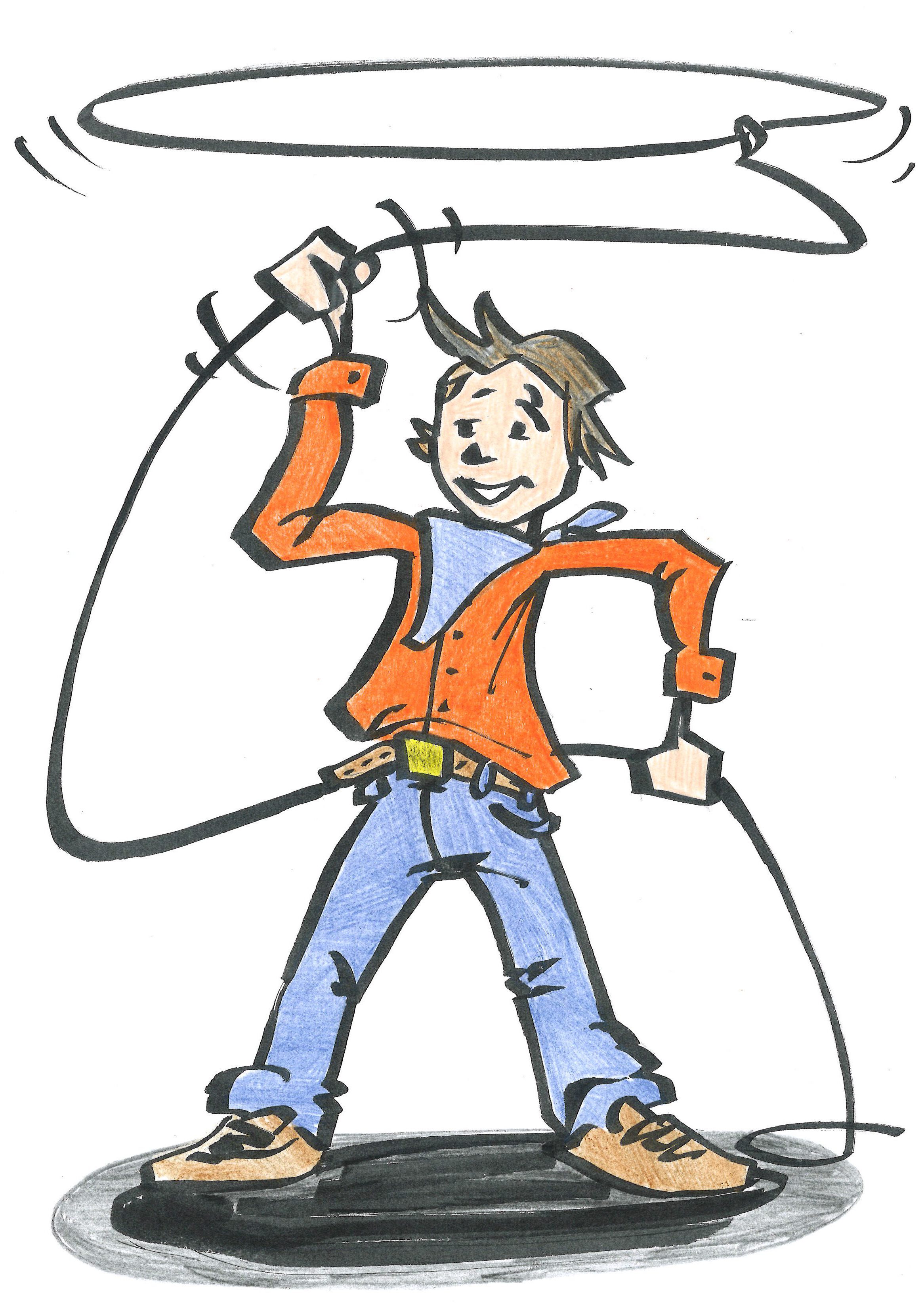
Title is the first thing the reader sees from your research article. Based on the title the reader decides to have a look at the article — or not. So a better title will attract more readers and quite possibly increase the impact of your research. If you wonder what makes a good title, and how you can formulate one for your paper as well, then check out our six tips for writing a great research article title.
Goal: catch the attention of the *right* reader
A good title helps the reader quickly recognize whether this paper is relevant for them. The title should give the reader an accurate picture of the article — and motivate the *right* reader to go on and read the article.
Additionally, an ideal title is memorable: researchers are reading many papers, some will be inevitably forgotten. A good title ensures that your paper will stick in your reader’s mind.
Case study: Important paper missed because of its title
Let me tell you an example from my own research, about an important paper that we missed because of its title.
Article entitled Distinct contributions of NaV1.6 and NaV1.2 in action potential initiation and backpropagation has been published in July 2009 in the prestigious journal Nature Neuroscience.
A couple of months later I started to work on a project that later became my PhD thesis. And the above mentioned article turned out to be the most important study on which my whole work was based.
Yet when I started, I didn’t know about the paper. My supervisor and another professor working on similar topics didn’t know about it either.
They had surely seen the title since they were following the journal’s publications. But they didn’t recognize that this might be a relevant paper.
Eventually we learned about the paper from a collaborator from a different institute. Later when I was presenting my work at conferences, I encountered many other researchers who missed this paper, even though it was clearly relevant to them.
So, what’s the issue with this title? Read on my tips on how to write a great title, and learn along the way what is problematic with this title and how we can fix it.
1. Headline the main result, not the main effort
If your paper has a clear main finding that can be summarized in a sentence, put it in the title. Such a title is much more interesting (and informative) than a title describing your approach.
Prof. Kevin Plaxco gives the following examples in his commentary article The art of writing science:
- Main effort (not optimal): A phylogenetic analysis of humans and chimps
- Main result (preferred): Phylogenetic evidence indicates an exceptionally close relationship between humans and chimps
Here is another example:
- Main result missing: Cognitive-behavioural stress management skills and quality of life in stress-related disorders
- Main result in the title: Cognitive-behavioural stress management skills improve quality of life in stress-related disorders
Concerning our case study example, the title Distinct contributions of NaV1.6 and NaV1.2 in action potential initiation and backpropagation does (kind of) contain the main result, albeit it is not formulated as a full sentence. We’ll see later how we can improve it.
2. Adapt the level of detail to your target audience
If your article is intended for a broader audience (that is, you want to publish it in a general journal), your title should be more general, so that it is understandable to this broader audience.
On the other hand, if your article is intended for a specialized audience and a specialized journal, you can include more details and jargon in the title.
Example:
- article published in the broad journal Nature: The hippocampus is crucial for forming non-hippocampal long-term memory during sleep
- article on a similar topic published in the specialized journal Neurobiology of Learning and Memory: Sleep enhances memory consolidation in the hippocampus-dependent object-place recognition task in rats
However, be careful with short and general titles. Such titles are typical for review articles, because they suggest a broad scope of the article. So your readers might mistaken your original research article for a review article.
For example, the title Axon Initial Segment–Associated Microglia sounds like it’s a review, but it is an original research article. Such a title is misleading for the readers, so it’s better to avoid it.
 Now let’s have a look at our case-study title: The article Distinct contributions of NaV1.6 and NaV1.2 in action potential initiation and backpropagation has been published in Nature Neuroscience, which is a general journal in the field of neuroscience.
Now let’s have a look at our case-study title: The article Distinct contributions of NaV1.6 and NaV1.2 in action potential initiation and backpropagation has been published in Nature Neuroscience, which is a general journal in the field of neuroscience.
Not every neuroscientist knows what is “NaV1.6″ and “NaV1.2″. My supervisor didn’t know either — and it turns out that this was one of the reasons why he and the other professor missed this article. “NaV1.6″ and “NaV1.2″ are sodium channels — and every neuroscientist knows what are those. So the keyword “sodium channels” should definitely be included in an article title published in such a general journal as Nature Neuroscience.
3. Avoid “fluff” at the beginning of the title
Beginning of the title is especially salient, especially visible to the reader. And often this is your only chance to convince your potential reader that this paper is relevant to them.
So it’s a mistake to start the title with “fluff”, that is, a phrase that doesn’t carry much content and can be safely omitted. Instead, begin your title with an important keyword.
For example:
Aspects ofimmune dysfunction in end-stage renal diseaseRevisitingthe role of xanthophylls in nonphotochemical quenching
Our case-study title Distinct contributions of NaV1.6 and NaV1.2 in action potential initiation and backpropagation does not start with a meaningless phrase that can be simply deleted. However, it also doesn’t start with an important keyword. Let’s see in the next point what would be a better beginning of the title.
4. Use the Context – Emphasis structure
A great title follows the optimal sentence structure: The beginning of the title acts as context for the rest of the title while the end of the title is naturally emphasized (if the reader gets this far).
So a good strategy is to include at the beginning of the title a keyword that will be recognized by all of your target readers and at the end of the title a keyword that is specific to your paper and its contribution.
However, what is a general keyword and what is a specific contribution might depend on your audience.
For example, the title Selective Adsorption to Particular Crystal Faces of ZnO suggests that this article primarily targets researchers interested in adsorption processes: “selective adsorption” is the general process, which is examined in this paper for the particular case of ZnO. However, if the paper targets researchers working on ZnO (zinc oxide), then it would be better to mention “ZnO” at beginning of the title.
Now let’s consider our case study: Distinct contributions of NaV1.6 and NaV1.2 in action potential initiation and backpropagation.
 As we have seen before, “Distinct contributions” is not a relevant keyword, so this phrase shouldn’t be placed at the beginning of the title. But “action potential initiation and backpropagation” is a relevant keyword: all neuroscientists know what it means. In fact, if the title would begin with this phrase, my supervisor wouldn’t have missed this important paper.
As we have seen before, “Distinct contributions” is not a relevant keyword, so this phrase shouldn’t be placed at the beginning of the title. But “action potential initiation and backpropagation” is a relevant keyword: all neuroscientists know what it means. In fact, if the title would begin with this phrase, my supervisor wouldn’t have missed this important paper.
Then, what is a specific keyword related to the contribution of this paper? I would say it could be “NaV1.6 and NaV1.2 sodium channels”: although there are some previous studies investigating these two channel types, this paper put all the puzzle pieces together and provided a coherent picture about the interplay of these two channel types in — you guessed it — action potential initiation and backpropagation.
So, let’s improve this title by putting “Action potential initiation and backpropagation” at the beginning and “NaV1.6 and NaV1.2 sodium channels” at the end. Then we can rearrange the rest such that it makes sense — and reveals the main message of the paper:
Action potential initiation and backpropagation is differentially regulated by NaV1.6 and NaV1.2 sodium channels
A much better title, don’t you think?
5. “Context: Details” structure also works
But what to do with papers that have no single take-home message that can be summarized in a sentence?
For explorative papers that cover several problems or aspects of a topic, the “Context: Details” structure is often suitable. Here, you start with the general contextual keyword(s) that grab the attention of the reader, and then supplement relevant details after the colon.
For example:
- UCB revisited: Improved regret bounds for the stochastic multi-armed bandit problem
- Single Cell Assay for Molecular Diagnostics and Medicine: Monitoring Intracellular Concentrations of Macromolecules by Two-photon Fluorescence Lifetime Imaging
Here are some examples that don’t work very well:
- Noise statistics identification for Kalman filtering of the electron radiation belt observations: 2. Filtration and smoothing
- A better oscillation detection method robustly extracts EEG rhythms across brain state changes: The human alpha rhythm as a test case
In these cases, the first part before the colon is too long, it provides much more information than just the context, and therefore the whole title becomes harder to understand and remember.
So for an effective “Context: Details” type of title, make sure that the first part before the colon is short and memorable. Then the second part after the colon can be longer and detailed, and the title will still create a clear image in reader’s mind.
6. Title as a question or catchy title? It depends…
Now you might ask yourself: can’t we write more interesting titles than those that accurately reflect the content of the paper? These can be pretty boring… What about titles formulated as questions? And “catchy” titles?
Well, the general rule is to follow the conventions of your field. If some of the research articles you are reading have catchy titles, then it’s most probably OK for you to do this as well.
For example, questions and catchy titles are quite common in research articles from psychology:
- How often is prep close to the true replication probability?
- Must interesting things be pleasant? A test of competing appraisal structures.
On the other hand, I have rarely seen a question as a title in a research article from neuroscience.
However, in most fields catchy and even funny titles are appreciated in commentary and opinion articles. For example, the “news & views” commentary article introducing our case-study paper Distinct contributions of NaV1.6 and NaV1.2 in action potential initiation and backpropagation is entitled Who let the spikes out?
Also the titles of review articles might be less formal. Which brings us to the next point…
Titles of review articles
Titles of review articles tend to be more general and broad than titles of original research articles. This, of course, reflects the broader scope and content of review articles.
For example:
These titles don’t consist of a full sentence — because there is rarely a main take-home message in a review article. However, what is helpful here is to follow the Context-Emphasis structure introduced in point 4.
Titles of review articles often include the word “review” in the title, for example:
- Gap junctions in developing neocortex: a review
- A systematic review of COVID-19 epidemiology based on current evidence
And as we said in the previous point, titles of review articles may be less formal and more catchy even in fields where such titles are not used for original research articles:
How to find the perfect title for your article
Now you have learned all the rules for good titles, but one question remains: How to proceed? How to come up with a great title for your article?

I suggest to write (or finalize) the title at the end of the writing process, when the whole article including the abstract is written. At this stage you should have gained clarity about the main message of your article, which will help you find the optimal title for your paper.
Then I recommend the following procedure:
- First, generate 10 possible titles. These 10 titles don’t have to be unique: some of them might only differ in one or two words or in the word order.
- Next, select the best title. You can do this together with your co-authors. Or each co-author picks one or two favorites and then you discuss and select the final title together.
With this procedure it’s much easier to find the most suitable title for your paper than if you would create just one title and then try to improve it.
Exercises
So that was quite some theory about how to write a great title. Now if you want to practice this new knowledge, here is a little exercise for you.
What is good and what is not optimal about these titles? How would you improve them?
- Analysis of processes leading to localized electron enhancements in the outer radiation belt
- Wild-type and cancer-related p53 proteins are preferentially degraded by MDM2 as dimers rather than tetramers
- A New Murine Model to Define the Critical Pathologic and Therapeutic Mediators of Polymyositis
If you are currently writing a manuscript and would like to get feedback and suggestions for your title: please, feel free to post it as a comment. Alternatively, you can also ask for feedback in our Facebook group Academic writing — peer feedback.
Dear Martina,
Thank you very much for another portion of valuable information! It’s really helpful!
I’d be very greatful if you could comment on a title for a review article I’m writting now. Which of the two title you think is better:
Novel approaches to epigenetic therapies
Novel approaches to epigenetic therapies: from drug combinations to epigenetic editing
Thank you for your suggestion,
Kind regards,
Aleksandra
Dear Aleksandra,
I am happy to hear that you found the article helpful!
Concerning your question: I prefer the second, longer title. It gives the reader a much better idea of what your review article is about. “Novel approaches to epigenetic therapies” alone is rather unspecific…
All the best,
Martina
Dear Martina,
That was my choice as well! Thank you for ensuring me about it!
All the best,
Aleksandra